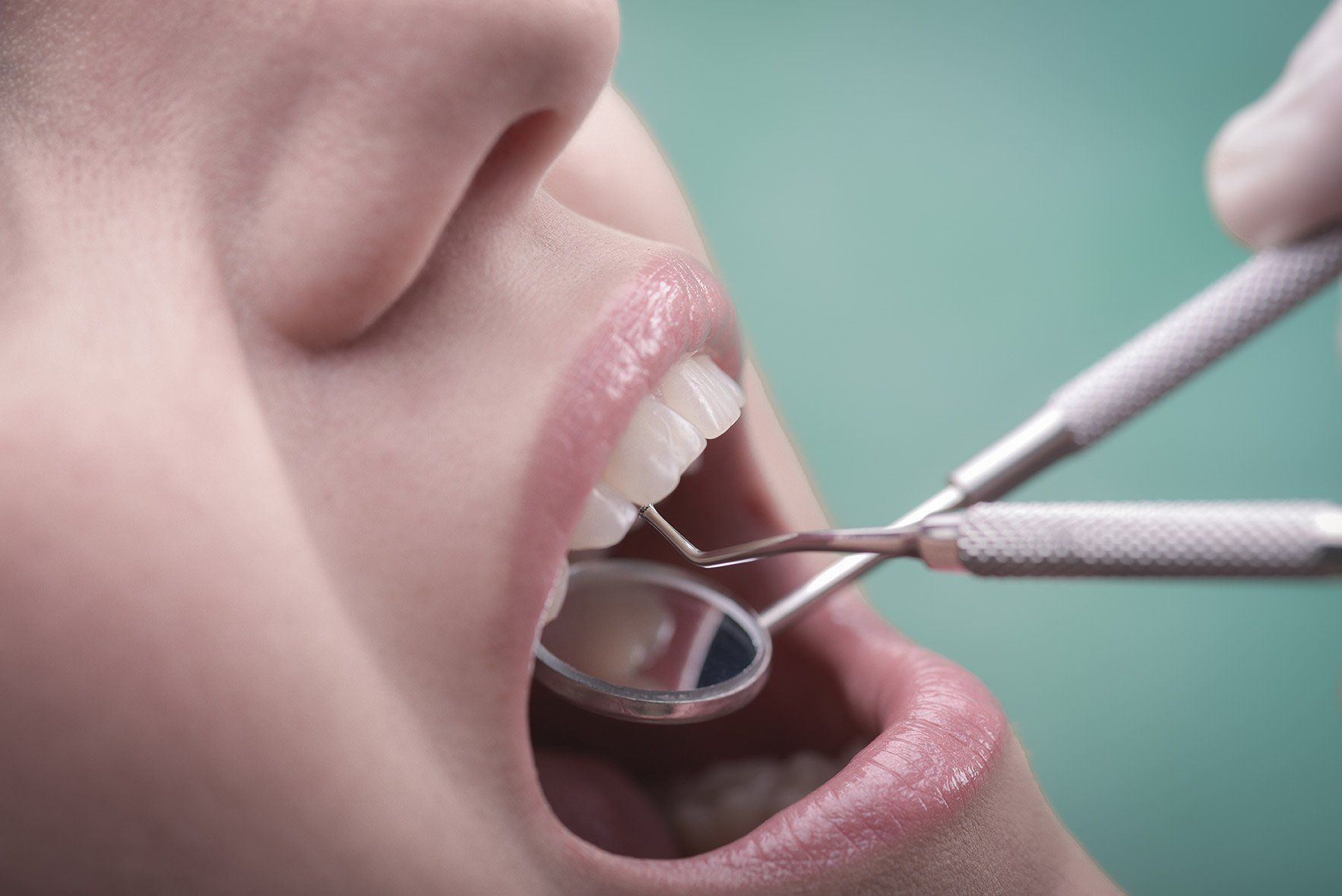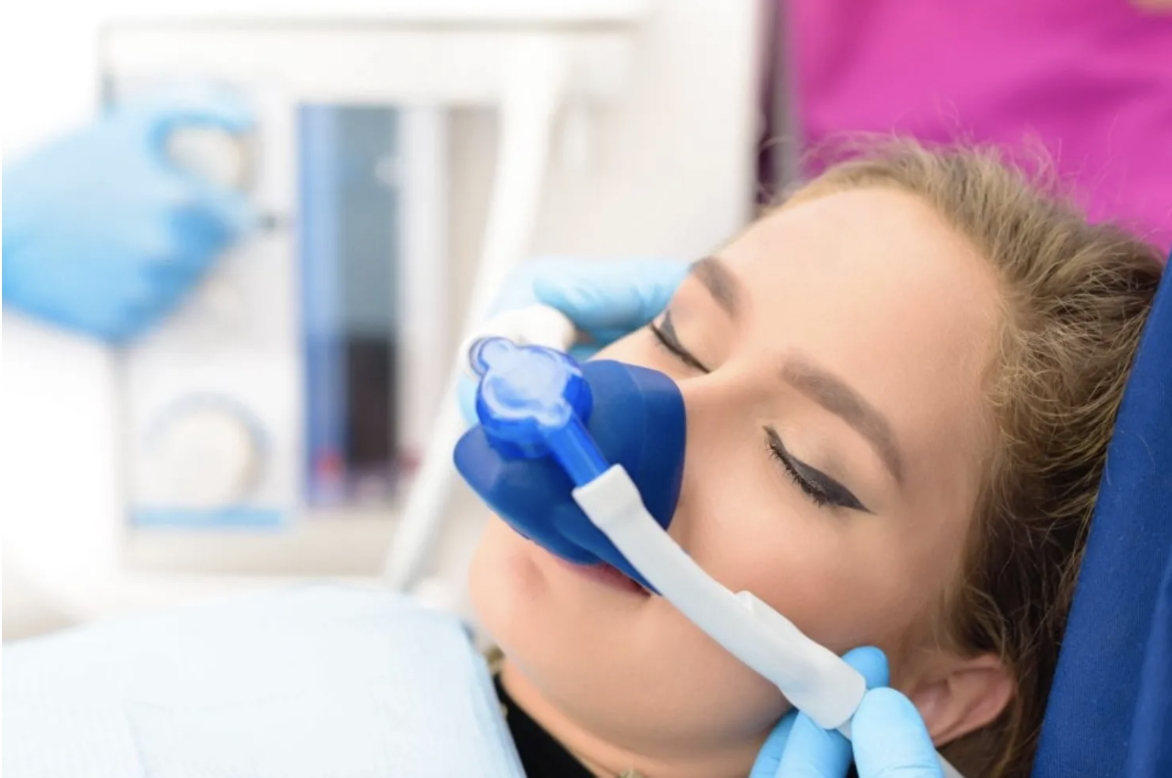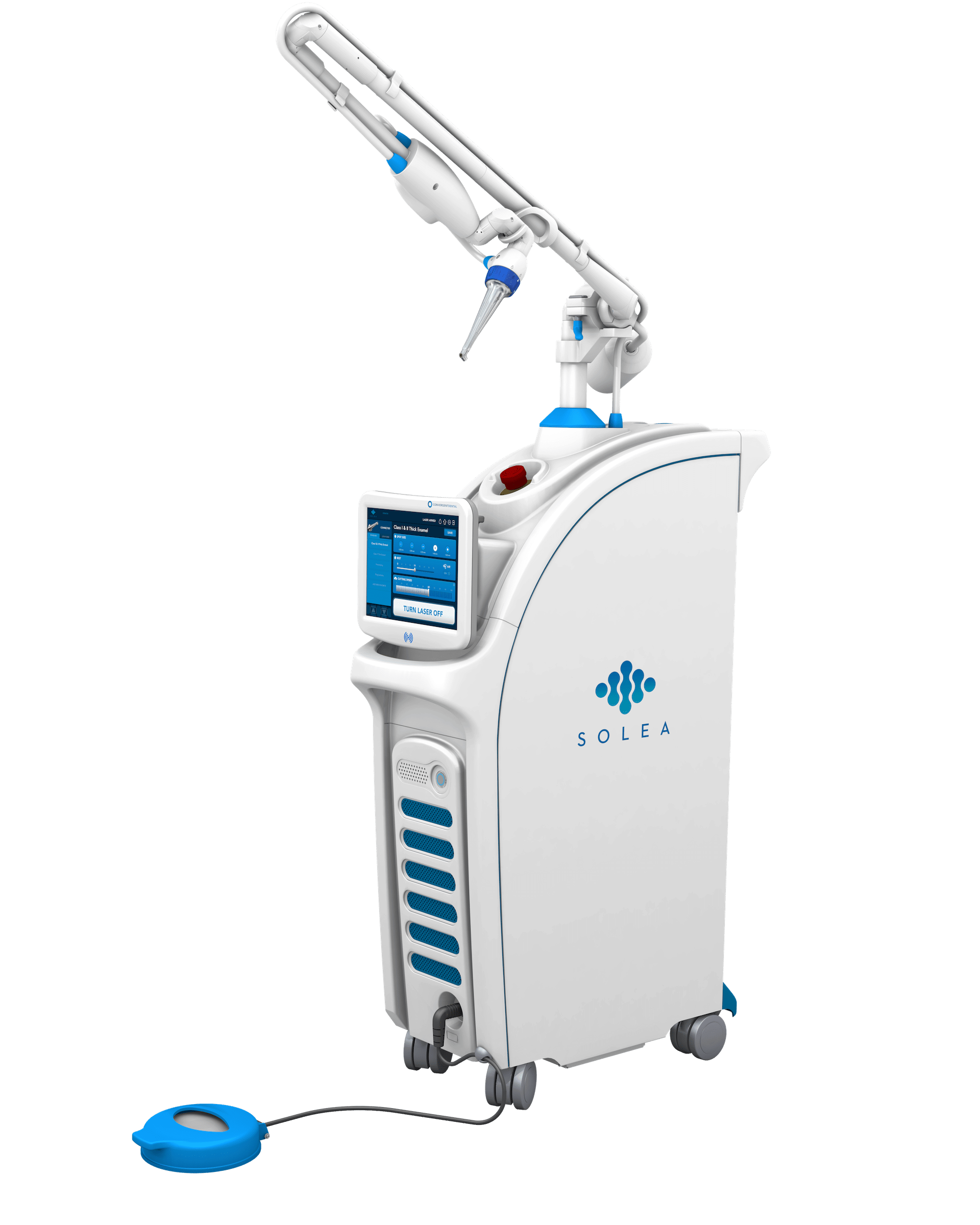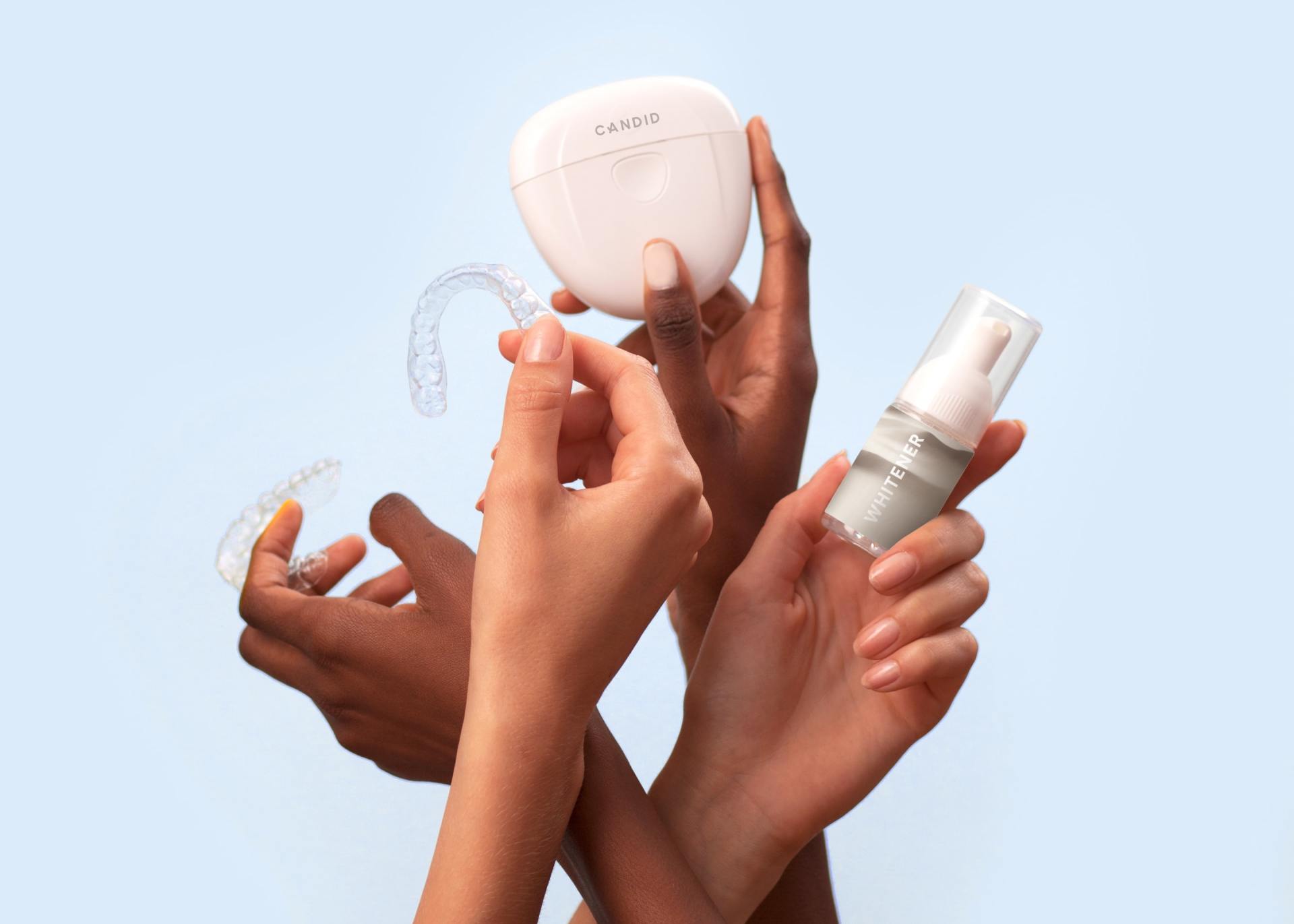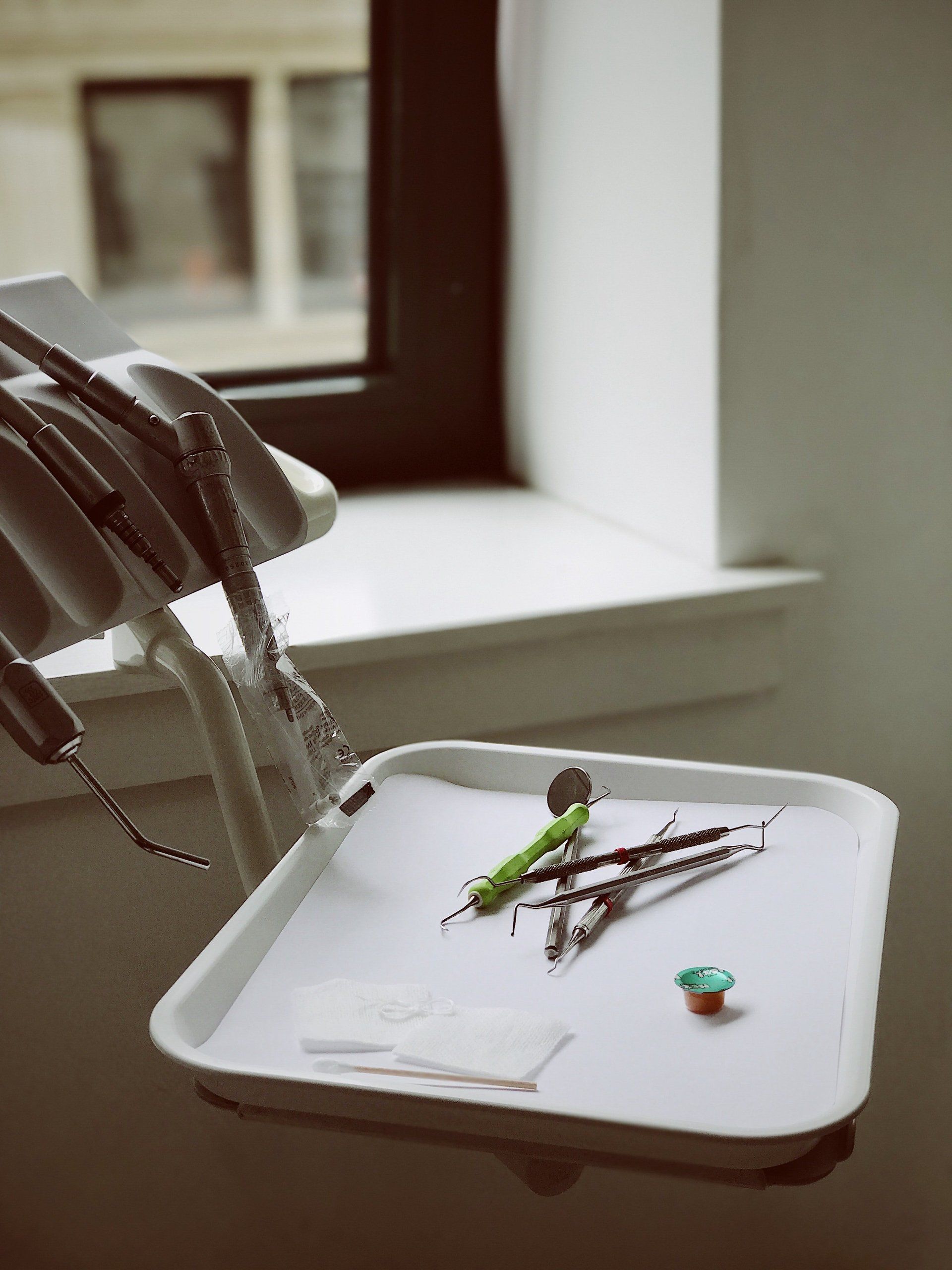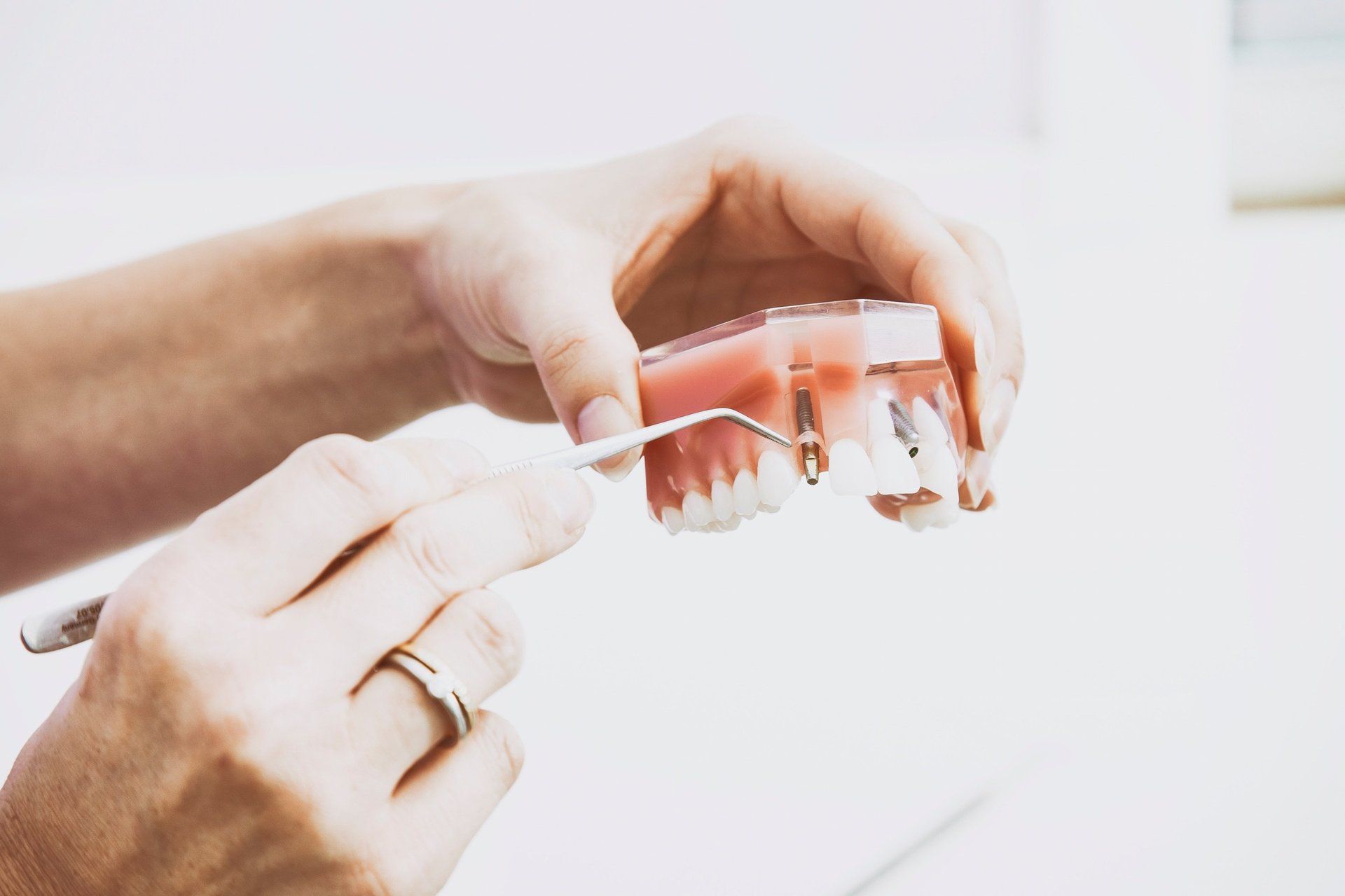OUR SERVICES
OUR SERVICES
We provide a wide range of professional services to meet your needs. We promise to provide every service with a smile, and to your highest level of satisfaction.
All the services you need, for healthy, happy teeth
We have what it takes to help you keep your teeth happy and healthy.
Periodontal Therapy
Periodontal TherapyDigital X-Ray Imaging
Digital X-Ray ImagingLaughing Gas
Laughing GasSolea No Numbing Fillings
Solea No Numbing FillingsCEREC Same Day Crowns
CEREC Same Day CrownsNight Guards
Night GuardsTeeth Whitening
Teeth WhiteningTooth Extraction
Tooth ExtractionRoot Canal Treatment
Root Canal TreatmentDental Implants
Dental Implants Comprehensive Care for the Whole Family
Comprehensive Care for the Whole Family
Let us take care of your entire family, from mom and dad to all the little ones.
Latex Free
Latex Free
We understand the going to the dentist can be worrisome, but what we don't want you to have to worry about is your allergies to latex.
TV's in the Ceiling
TV's in the Ceiling
Relax, lay back, and watch your favorite show why we help you achieve that perfect smile.
Periodontal Therapy
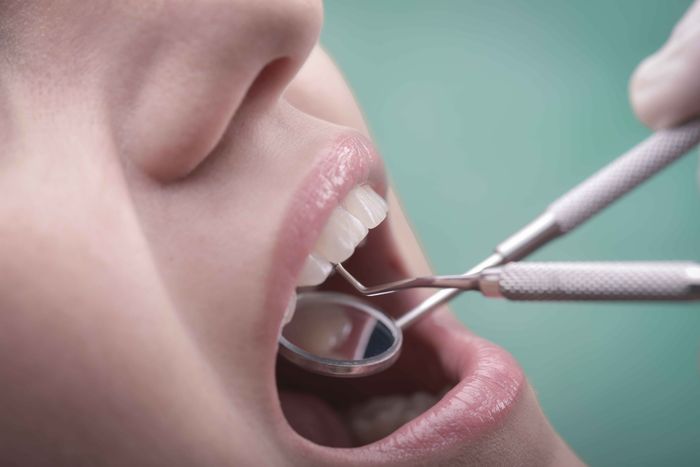
About Periodontal Therapy
Periodontal therapy includes both surgical and non-surgical techniques to restore health to the tissues that support the teeth (gums and bone) and prevent tooth loss. They include:
- Scaling and Root Planing. These deep-cleaning techniques are the best starting point to control gum disease. Plaque and calculus (tartar) are removed from beneath the gum tissues, using hand scalers and/or ultrasonic instruments.
- Gum Grafting. Sometimes it’s necessary to replace areas of lost gum tissue so that tooth roots are adequately protected. This can be accomplished by taking healthy gum tissue from one area of the mouth and moving it to where it is needed, or by using laboratory-processed donor tissue.
- Periodontal Plastic Surgery. When used to describe surgery, the word “plastic” refers to any reshaping procedure that creates a more pleasing appearance of the gum tissues.
- Periodontal Laser Treatment. Removing diseased gum tissue with lasers can offer significant advantages over conventional surgery, such as less discomfort and gum shrinkage.
- Crown Lengthening Surgery. This is a surgical procedure in which tooth structure that is covered by gum and bone tissue may need to be exposed either for cosmetic reasons (too make the teeth look longer and the smile less gummy) or to aid in securing a new dental crown.
- Dental Implants. Today’s preferred method of tooth replacement is a titanium dental implant, which is placed beneath the gum line and into the jawbone during a minor surgical procedure. The implant is then attached to a realistic-looking dental crown that is visible above the gum line and indistinguishable from a natural tooth.
Why?
It is not a given that we must lose teeth as we age. If we maintain good oral hygiene and have regular professional cleanings and oral examinations, chances are we can keep our natural teeth for life. That involves not only caring for the teeth themselves but also the structures that surround them: the gums and tooth-supporting bone. Gum disease, which is a bacterial infection, threatens these supporting tissues. That is why dental professionals are always on the lookout for early signs that patients may not notice. When signs of trouble become apparent, periodontal therapy may be suggested.
Periodontal therapy can take various forms, but the goal is always to restore diseased tissues to health. Gum (periodontal) disease can spread from the gums to the bone that supports the teeth, and may even cause tooth loss in the most severe cases. There are very effective therapies to combat this, ranging from scalings (deep cleanings) that remove plaque and calculus (tartar) from beneath the gum line, to surgical repair of lost gum and bone tissue.
After Your Appointment...
Dental plaque is the main cause of periodontal disease, so it’s essential to remove it every day with effective brushing and flossing. This doesn’t mean scrubbing, which can actually cause your gums to recede. Proper techniques can be demonstrated for you if you have any questions.
Of course, there are some areas of the mouth that a toothbrush and floss just can’t reach, which is why it’s so important to have regular professional cleanings at the dental office. Your regular dental exam is also a time when early signs of gum disease can be detected — before they become apparent even to you.
Eating a nutritious diet low in sugar, and staying away from tobacco in all forms, will also increase your periodontal health — and your chances of keeping your teeth for life.
Digital X-Ray Imaging

About Digital X-Ray Imaging
Digital radiography (known as digital X-ray) uses an electronic sensor instead of traditional X-ray film to capture X-ray images. The digital images are then easily stored directly to a computer.
Low dose digital X-rays have a number of advantages:
- Digital X-rays reduce patient radiation exposure by up to 90 percent compared to the already low exposure of traditional dental X-rays.
- Your dentist can instantly view and enlarge the images, allowing us to detect problems easier and point them out to you.
- Digital X-rays do not require film processing, thereby eliminating the need to dispose of harmful waste products and chemicals into the environment.
Why?
As a preventative, diagnostic tool, dental X-rays are essential, revealing valuable information not otherwise visible during a regular dental exam. They enable us to look at what is going on between teeth and under the gum, then use this information to safely and accurately detect hidden dental abnormalities and create an accurate treatment plan. Without X-rays, such problem areas may go undetected.
Among other things, dental X-rays may reveal:
- Abscesses or cysts
- Bone loss
- Cancerous and non-cancerous tumors
- Decay between the teeth
- Developmental abnormalities
- Poor tooth and root positions
- Problems inside a tooth or below the gum line
After Your Appointment...
Digital X-rays reduce patient radiation exposure and enables Dr. Evans to instantly view and enlarge the images. This means that there is low to no risk from the radiation and you will be able to immediately see what the Dr. sees, meaning less return visits.
Laughing Gas
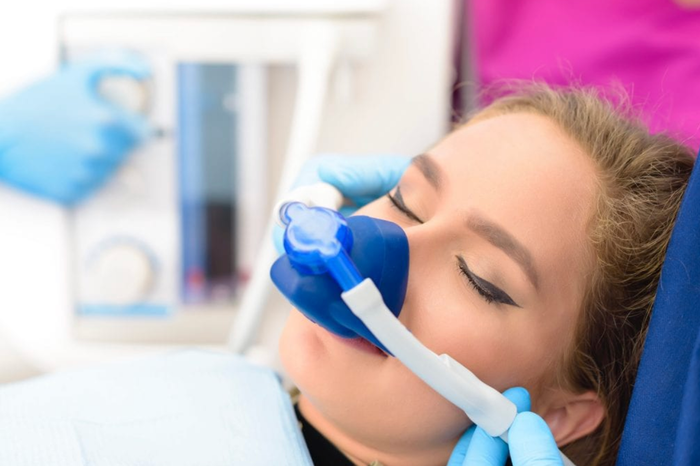
About Laughing Gas
Nitrous oxide (N2O), more commonly referred to as laughing gas, is used as a local sedation method. It is colorless and odorless. Nitrous oxide is effective as a sedative because it relaxes patients with the pleasurable feelings it emits. Nitrous oxide’s usefulness also stems from how quickly it works and that its effects are reversible. For those and other reasons, nitrous oxide is widely considered to be a safe sedation method.
Most dental visits are pretty by the book. A dental hygienist will scrape plaque off of your teeth, followed by a polishing to remove any stain on the teeth. After that, a round of flossing, a peek under the tongue, and your dentist gives your teeth a thumbs up. You pocket a free toothbrush and floss, book your next appointment and mark another six months on your calendar, but not every visit is so smooth. Some procedures require laughing gas to be administered in order to improve and de-stress your experience.
Why?
The most common form of sedation in the dental office is nitrous oxide, or “laughing gas.” Also called inhalation analgesia – and used to alleviate pain when giving birth, according to the National Institutes of Health (NIH) – nitrous oxide does not put you to sleep, and is effective at reducing your anxiety about a dental procedure. It is very safe and provided in most dental offices. Local injections of anesthesia, which are still used in combination with nitrous oxide, now see consistent effectiveness, and some are practically painless. Nonetheless, the gas can be administered by a machine to further reduce the discomfort of the injection.
After Your Appointment...
Digital X-rays reduce patient radiation exposure and enables Dr. Evans to instantly view and enlarge the images. This means that there is low to no risk from the radiation and you will be able to immediately see what the Dr. sees, meaning less return visits.
Solea® No Numbing Fillings
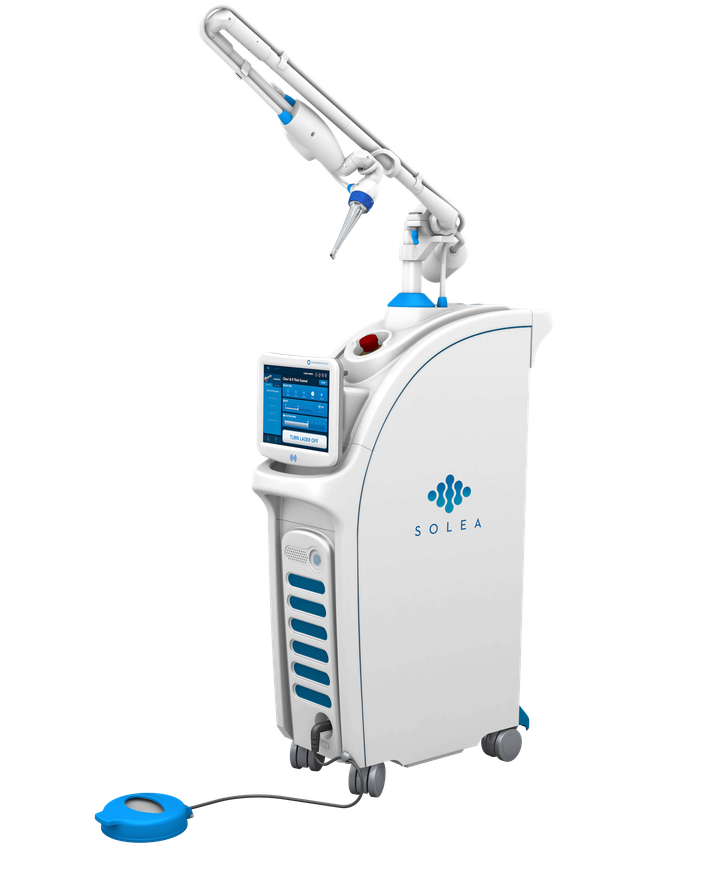
About Solea® No Numbing Fillings
A filling helps to restore a tooth damaged by decay back to its normal function and shape and helps prevent further decay by eliminating areas where bacteria can enter the tooth. Your dentist will consider a number of factors when choosing which type of filling material is best for you; this includes the extent of the repair, whether you have allergies to certain dental materials, where in your mouth the filling is needed and the cost.
Initially, the dental drill revolutionized our industry and how we did fillings, but now it is almost thought of as a patient-deterrent rather than a vital tool that prepares the tooth for a restorative procedure. Patients, regardless of age and gender associate the drill with anxiety, fear, and pain, which does not help to promote the clinician-patient relationship or the overall experience. Fortunately, patients today don’t have to wince each time one of their appointments approach. Instead, we can all take comfort in knowing that there is finally an alternative to the loud, uncomfortable, intrusive drill and it is called Solea®.
As dentistry’s leading all-tissue laser, Solea is reliably anesthesia-free, blood-free, suture-free, and pain-free. This technology is not just how dentistry is performed by the doctor, it is also creating a relaxed and pleasant experience for the apprehensive patient. So, how exactly does laser dentistry—specifically Solea—change what it means to go to the dentist or getting a tooth filled? Below are a couple of examples.
Why?
Injections and numbing
Conventionally, patients who visit their dentist for fillings and other restorations must receive an injection of anesthesia before the work can begin. With Solea, the majority of hard and soft tissue procedures can reliably be accomplished without the administration of an anesthetic agent. This means patients aren’t forced to wait for the injection to kick in, and they also won’t have to deal with the undesirable aftermath, such as the feeling of numbness that affects the entire face and continues to linger for hours afterward.
Sound and sensation
If there is one thing that evokes uneasiness from patients, it is the distinct sound of the turbine. Truth be told, whether you are the one sitting in the chair or flipping through a magazine in the waiting room, you know the familiar echo of the drill’s “whirr.” In addition to its sound, the intense vibration makes the tool even more unsightly. Solea, on the other hand, is much quieter than the drill, and in many cases, the patient cannot tell when the doctor is actually working on a restoration. This allows patients to be more relaxed and experience dentistry like they never knew before.
Faster procedures and fewer visits
Total procedure time when performed with traditional dental drills typically take longer because patients need to be anesthetized; and if there are various restorations needed, more than one appointment is often required. For clinicians who use Solea, multiple-quadrant, single-visit dentistry is a reality. Instead of having to schedule a series of appointments and worry about taking time off from work, patients can usually have all of their dental work completed in just one visit. Patients really love the service that comes with a single visit.
After Your Appointment...
There are actually fewer risks in using a dental laser-like Solea in comparison to traditional dental treatments. There is a less potential chance of bacterial infection because laser treatments are so precise, and there is often far less bleeding during surgical procedures.When patients have anesthesia they typically leave the office with that numb feeling still prevalent. With Solea, you are able to go right out to lunch or back to work without that numb sensation following your appointment.
CEREC Same Day Crowns

About CEREC Same Day Crowns
CEREC is an acronym for Chairside Economical Restoration of Esthetic Ceramics. Seems straightforward enough, right? It basically means that Dr. Evans can restore one or more damaged teeth in one appointment using a high-end ceramic material that is matched perfectly to the color of your original teeth. The CEREC instrument itself combines CAD/CAM technology, a digital camera, computer, and milling machine to make an optical impression of the tooth and then design the restoration.
In addition to being extremely convenient, CEREC tooth restoration is also healthy. In years past, dentists had limited options when it came to repairing decayed and damaged teeth, being forced to use amalgam, metal, and other harmful metals. Thanks to the CEREC system, Dr. Evans can use strong, tooth-colored ceramic to restore your teeth to their natural strength, structure, and function. You will no longer have to be embarrassed about having metal crowns that people will notice, as CEREC crowns blend in perfectly with your natural teeth. Furthermore, the ceramic material used is similar to the composition of natural teeth, which means you can eat and drink whatever you so desire without having to worry about compromising the work Dr. Evans has done! It is important to stay on top of your dental health habits, but you can treat your new crown just as you would the rest of your teeth.
Why?
Evans Dental uses CEREC equipment, which allows us to create natural-looking ceramic fillings on-site, in just one visit. Using a digital camera to capture an optical image of the damaged tooth, we are then able to design the perfect restoration using CAD software and tooth-colored ceramic in under an hour. Gone are the days of being fitted with a temporary crown and having to make room in your busy schedule for yet another visit to the dentist.
This reduces the anxiety, fear, pain, and discomfort associated with traditional fillings, which provides an all-around more pleasant experience. After a while, you may even enjoy going to the dentist. You probably never thought that was possible, did you?
One option within the CEREC same day crown system is ¾ crowns, onlays, and inlays. In just one visit with Dr. Evans’ CEREC bluecam, a patient’s old metal fillings can be removed and restored with permanent and aesthetically-pleasing porcelain or ceramic ¾ restoration. There are four main advantages to ¾ restoration over full-coverage crowns:
- Conservative approach – This system allows Dr. Evans to save valuable tooth structure, which keeps the natural tooth intact and prevents it from having to be shaved down in order to prepare for a conventional full coverage crown
- Less sensitivity – Because less tooth structure is removed and the permanent restoration is cemented within minutes, there is a dramatic reduction in post-op sensitivity. Another bonus is that the tooth recovery period is immediate
- Highly-aesthetic – The new ¾ restoration is fabricated from a custom porcelain block which is ready to be cemented in minutes. The highly-aesthetic and natural-looking porcelain that Dr. Evans uses blends right in with the surrounding tooth structure seamlessly. To the naked eye, your tooth looks brand new. Dr. Evans is very pleased with the beauty and strength of these restorations.
- Strength – Dr. Evan uses Emax/empress porcelain, which is one of the most aesthetic options out there, as well as one of the strongest. This material supports the tooth structure and gives the patient a durable and long shelf life, very similar to a full coverage crown
After Your Appointment...
Your crowned tooth may be sensitive for a few days after the procedure. Try to avoid sticky or chewy foods right after your crown is placed. Continue brushing your teeth twice a day for two minutes each time and flossing once a day. Dr. Evans might also recommend fluoride mouthwash to better clean your teeth or a sensitivity toothpaste to help curb hot and cold sensitivity. It’s important to continue good dental hygiene as crowned teeth are still susceptible to decay near the gum line. Continuing your relationship with us by keeping up with your semi-annual cleanings and exams will aid in prolonging a lifelong healthy smile.
Night Guards
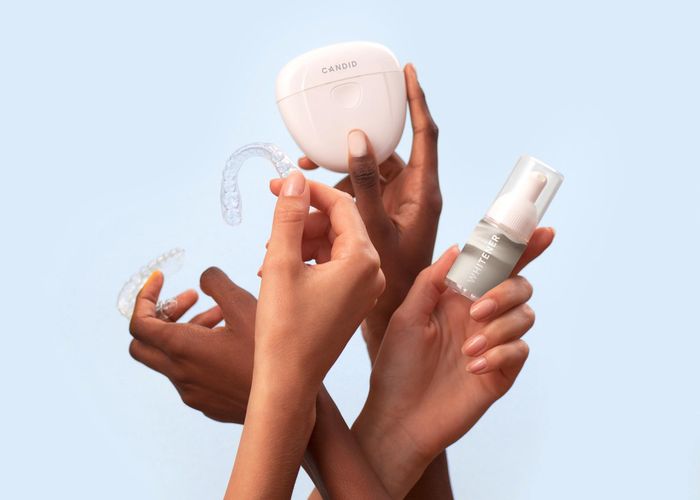
About Night Guards
If you frequently wake up with a sore jaw, a dull headache or tooth pain, you may want to ask a qualified dental professional if you are suffering from a condition called bruxism. Bruxism, or teeth grinding, affects about 10 to 15 percent of adults, according to the American Dental Association.
There are several ways to alleviate the effects of bruxism. One of the most common, which your dentist may recommend, is a night guard. This is an appliance typically worn while sleeping through the night, which is available without a prescription at most pharmacies. To use the appliance, you simply boil it, let it cool for a few seconds and then gently bite into it to shape it to your own teeth.
Night guards are also available through your dentist. Guards of this type tend to be of a higher quality and superior fit, as they are made in a special laboratory from an impression of your mouth carefully taken by a dental professional. This is generally a more expensive device than one purchased over-the-counter but can be more comfortable to wear.
Regardless of where a night guard is purchased, its main function is to prevent the surfaces of your teeth from grinding together, causing you to chip and crack your teeth and strain your jaw muscles.
Other Treatments for Teeth Grinding
If a night guard is uncomfortable, there are other possible treatments listed below that you can ask your dentist about.
- Teeth straightening: Teeth that are out of alignment–what dentists call malocclusion–can contribute to teeth grinding. This can be remedied by corrective measures such as braces.
- Stress prevention: One of the main causes of bruxism is anxiety so your dentist might advise you to utilize one or more at-home methods of relaxation, like meditation, or in some cases professional counseling, to get you to relax and stop clenching your jaw.
- Change of diet or medication: Your dentist might recommend avoiding stimulants, such as caffeine, to reduce teeth grinding. Certain medications, such as antidepressants, might also contribute to the issue, so make sure you tell your dentist about any medications you are taking so he can suggest an alternative if one is warranted.
The most important thing to know about bruxism is that it can be treated with the help of a dentist. Learn more about teeth grinding in the Colgate Oral Care resources.
Why?
A night guard prevents chewing or clenching with heavy pressure on back teeth in the night. Although you may be unaware this is happening, a night guard can alleviate the cause of your discomfort.
After Your Appointment...
Put your new night guard in 30 minutes before bedtime to ensure you can fall asleep easily with it in. Wear it every night until your symptoms are gone. Add stress reduction activities such as a walk in the evening time to improve healing.
Teeth Whitening

About Teeth Whitening
There are two main types of whitening procedures. Vital whitening is performed on teeth that have live nerves. Non-vital whitening is done on a tooth that has had root canal treatment and no longer has a live nerve.
Vital Whitening
The most common type of vital tooth whitening uses a gel that is applied directly to the tooth surface. This product contains some form of hydrogen peroxide.
Tooth whitening can be done in the dentist’s office or at home. In-office whitening allows your dentist to use a more powerful whitening gel. A specialized light or laser activates the gel and allows bleaching to happen faster.
In-office whitening usually takes 30 to 90 minutes. You will need 1 to 3 appointments. The number will depend upon the method used, how severe your stains are and how white you want your teeth to be. Different types of stains respond differently to the treatment.
First, your dentist will apply a substance that covers and protects the gums around the teeth. Then, the whitening agent will be placed on the teeth.
Some whitening agents are activated by laser light, special lights or by the heat from these lights. After the whitening agent is applied, the dentist will shine the light on your teeth. If they are badly discolored, your dentist may suggest that you continue the bleaching process at home for a few days or weeks.
For in-home whitening, your dentist will take impressions of your upper and lower teeth and will make custom mouthpieces to fit you. The mouthpiece needs to fit well. A close fit helps the whitening agent remain in contact with your teeth.
At home, you will fill each mouthpiece with a whitening gel your dentist provides. You will wear the mouthpiece for several hours every day. Many people achieve the amount of whitening they want within a week or two. However, you may need to wear the mouthpiece for four weeks or longer.
You also can buy whitening products over the counter. They contain a weaker whitening agent than the products you can get from your dentist. Therefore, whitening may take longer. The whitening agent is applied as a gel placed in a mouthpiece or as a strip that sticks to your teeth. Over-the-counter mouthpieces fit less securely than the kind you get from your dentist.
Whitening toothpastes are available as well. They contain abrasives that remove stains on the enamel.
Non-Vital Whitening
Vital whitening may not improve the appearance of a tooth that has had root-canal treatment because the stain is coming from the inside of the tooth. If this is the case, your dentist will use a different procedure that whitens the tooth from the inside. He or she will place a whitening agent inside the tooth and put a temporary filling over it. The tooth will be left this way for several days. You may need this done only once, or it can be repeated until the tooth reaches the desired shade.
Why?
The outer layer of a tooth is called the enamel. The color of natural teeth is created by the reflection and scattering of light off the enamel, combined with the color of the dentin under it. Your genes affect the thickness and smoothness of the enamel. Thinner enamel allows more of the color of the dentin to show through. Having smoother or rougher enamel also affects the reflection of light and therefore the color.
Every day, a thin coating (pellicle) forms on the enamel and picks up stains. Tooth enamel also contains pores that can hold stains.
The most common reasons for teeth to get yellow or stained are:
- Using tobacco
- Drinking dark-colored liquids such as coffee, cola, tea, and red wine
- Not taking good care of your teeth
- Aging makes teeth less bright as the enamel gets thinner and the dentin becomes darker.
It is also possible to have stains inside the tooth. These are called intrinsic stains. For example, intrinsic stains can be caused by exposure to too much fluoride as a child while teeth are developing. Other causes include tetracycline antibiotics. They can stain a child’s teeth if taken by a mother during the second half of pregnancy or by a child who is 8 years old or younger. Teeth are still developing during these years. Trauma may also darken a tooth.
Tooth whitening is most effective on surface (extrinsic) stains.
After Your Appointment...
If you find that your gums are white or sore, follow up with your dentist.
Whitening is not a permanent solution. The stains will come back. If you smoke or consume a lot of staining foods or drinks, you may see the whiteness start to fade in as little as one month. If you avoid these sources of staining, you may not need another whitening treatment for 6 to 12 months.
Re-whitening can be done in the dentist’s office or at home. If you have a custom-made mouthpiece and whitening agent at home, you can whiten your teeth as often as you need to. Discuss your whitening schedule with your dentist. You can talk about what whitening products would work best for you.
Tooth Extraction

About Tooth Extraction
There are two types of extractions:
- A simple extraction is performed on a tooth that can be seen in the mouth. General dentists commonly do simple extractions. In a simple extraction, the dentist loosens the tooth with an instrument called an elevator. Then the dentist uses an instrument called a forceps to remove the tooth.
- A surgical extraction is a more complex procedure. It is used if a tooth may have broken off at the gum line or has not come into the mouth yet. Surgical extractions commonly are done by oral surgeons. However, they are also done by general dentists. The doctor makes a small incision (cut) into your gum. Sometimes it’s necessary to remove some of the bone around the tooth or to cut the tooth in half in order to extract it.
Most simple extractions can be done using just an injection (a local anesthetic). You may or may not receive drugs to help you relax. For a surgical extraction, you will receive a local anesthetic, and you may also have anesthesia through a vein (intravenous). Some people may need general anesthesia. They include patients with specific medical or behavioral conditions and young children.
Why?
If a tooth has been broken or damaged by decay, your dentist will try to fix it with a filling, crown or other treatment. Sometimes, though, there’s too much damage for the tooth to be repaired. In this case, the tooth needs to be extracted. A very loose tooth also will require extraction if it can’t be saved, even with bone replacement surgery (bone graft).
Here are other reasons:
- Some people have extra teeth that block other teeth from coming in.
- Sometimes baby teeth don’t fall out in time to allow the permanent teeth to come in.
- People getting braces may need teeth extracted to create room for the teeth that are being moved into place.
- People receiving radiation to the head and neck may need to have teeth in the field of radiation extracted.
- People receiving cancer drugs may develop infected teeth because these drugs weaken the immune system. Infected teeth may need to be extracted.
- Some teeth may need to be extracted if they could become a source of infection after an organ transplant. People with organ transplants have a high risk of infection because they must take drugs that decrease or suppress the immune system.
- Wisdom teeth, also called third molars, are often extracted either before or after they come in. They commonly come in during the late teens or early 20s. They need to be removed if they are decayed, cause pain or have a cyst or infection. These teeth often get stuck in the jaw (impacted) and do not come in. This can irritate the gum, causing pain and swelling. In this case, the tooth must be removed. If you need all four wisdom teeth removed, they are usually taken out at the same time.
After Your Appointment...
- Avoid anything that might prevent normal healing.
- Don’t smoke or rinse your mouth vigorously.
- Avoid drinking through a straw for 24 hours.
- Follow the diet your dentist suggests.
For the first few days, if you must rinse, rinse your mouth gently. If you experience swelling, apply a cold cloth or an ice bag and call your dentist right away. Ask your dentist about pain medication. You can brush and floss the other teeth as usual. But don’t clean the teeth next to where the tooth was removed.
Root Canal Treatment

About Root Canal Treatment
A root canal is a treatment to repair and save a badly damaged or infected tooth instead of removing it. The term “root canal” comes from cleaning of the canals inside a tooth’s root. Decades ago, root canal treatments often were painful. With dental advances and local anesthetics, most people have little if any pain with a root canal. In fact, it’s probably more painful living with a decayed tooth. Root canal alternatives include extracting the damaged tooth and replacing it with a dental implant, bridge or removable partial denture.
Why?
Teeth have a soft core called dental pulp. The pulp extends from the crown — the visible part of the tooth — to the tip of the tooth’s root in the jawbone. The pulp contains nerves, blood vessels and connective tissue. When a tooth is cracked or has a deep cavity, bacteria can enter the A root. Left untreated, bacteria and decaying material can cause a serious infection or a tooth abscess, leading to pulp death, bone loss and loss of the tooth itself. Signs and symptoms may include swelling around your face and neck, a hole in your tooth, toothache or tooth pain, gum swelling, and temperature sensitivity.
After Your Appointment...
After your root canal, your restored tooth with the new crown should work normally and look cosmetically pleasing. If you follow good dental and oral hygiene, your restored tooth could last a lifetime. The first few days after your root canal, the tooth may be sensitive. Over-the-counter pain medications can help. If pain or pressure lasts more than a few days, be sure to talk to your dentist or endodontist.
Dental Implants
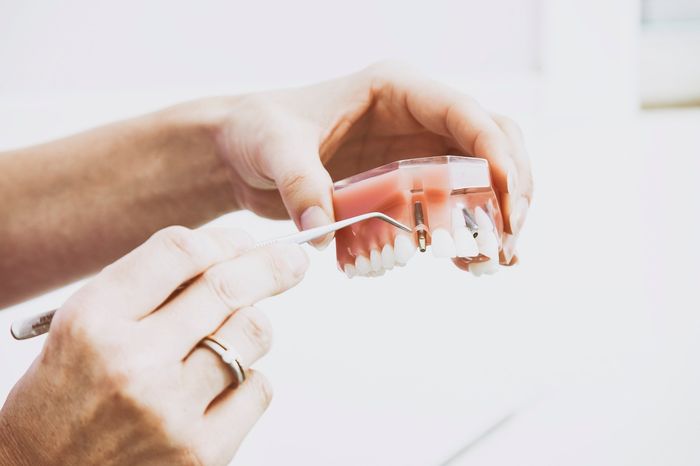
About Dental Implants
Dental implant surgery is a procedure that replaces tooth roots with metal, screwlike posts and replaces damaged or missing teeth with artificial teeth that look and function much like real ones. Dental implant surgery can offer a welcome alternative to dentures or bridgework that doesn’t fit well and can offer an option when a lack of natural teeth roots don’t allow building denture or bridgework tooth replacements.
How dental implant surgery is performed depends on the type of implant and the condition of your jawbone. Dental implant surgery may involve several procedures. The major benefit of implants is solid support for your new teeth — a process that requires the bone to heal tightly around the implant. Because this bone healing requires time, the process can take many months.
Why?
Dental implants are surgically placed in your jawbone, where they serve as the roots of missing teeth. Because the titanium in the implants fuses with your jawbone, the implants won’t slip, make noise or cause bone damage the way fixed bridgework or dentures might. And the materials can’t decay like your own teeth that support regular bridgework can.
After Your Appointment...
Whether you have dental implant surgery in one stage or multiple stages, you may experience some of the typical discomforts associated with any type of dental surgery, such as:
- Swelling of your gums and face
- Bruising of your skin and gums
- Pain at the implant site
- Minor bleeding
- You may need pain medications or antibiotics after dental implant surgery. If swelling, discomfort or any other problem gets worse in the days after surgery, contact your oral surgeon.
After each stage of surgery, you may need to eat soft foods while the surgical site heals. Typically, your surgeon will use stitches that dissolve on their own. If your stitches aren’t self-dissolving, your doctor removes them.
